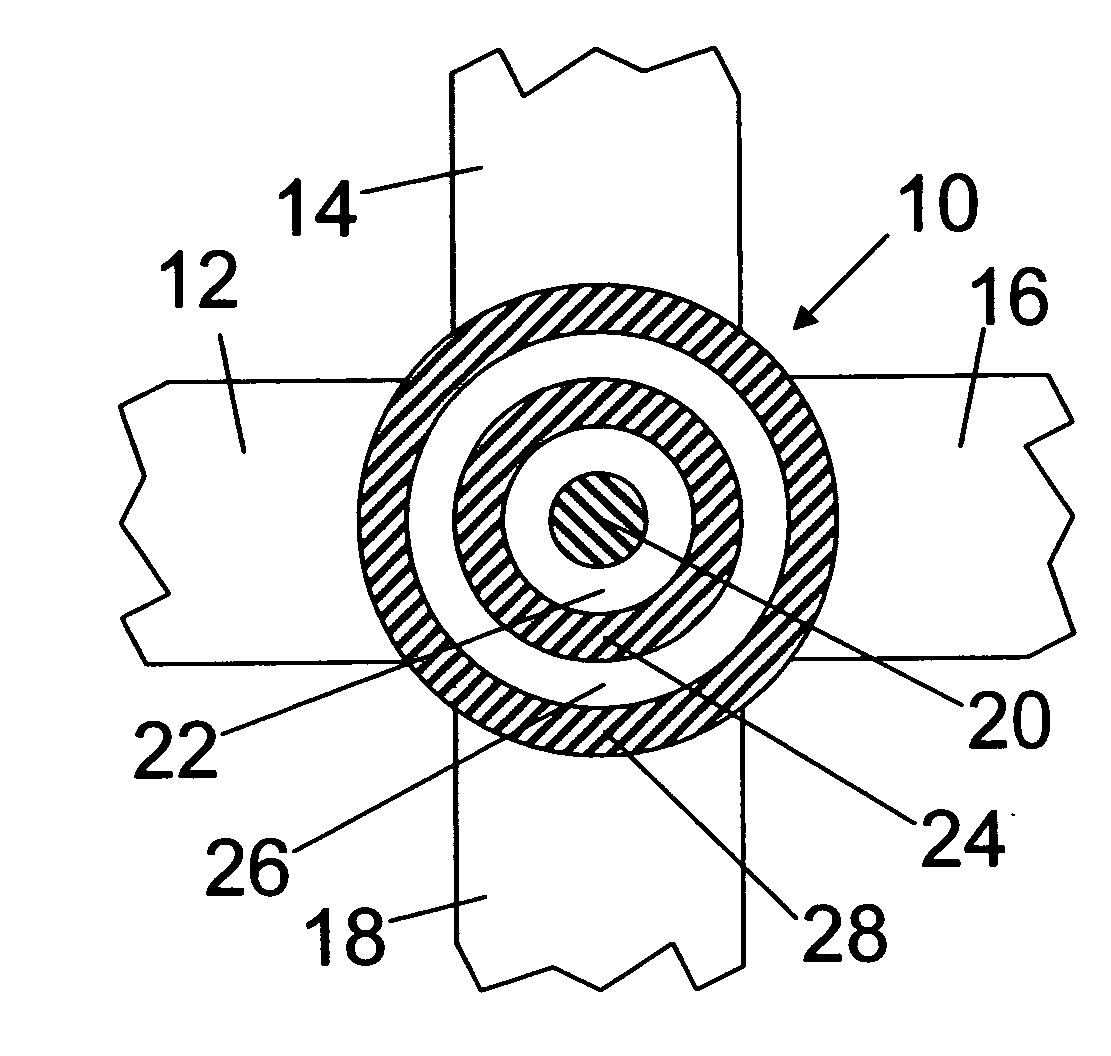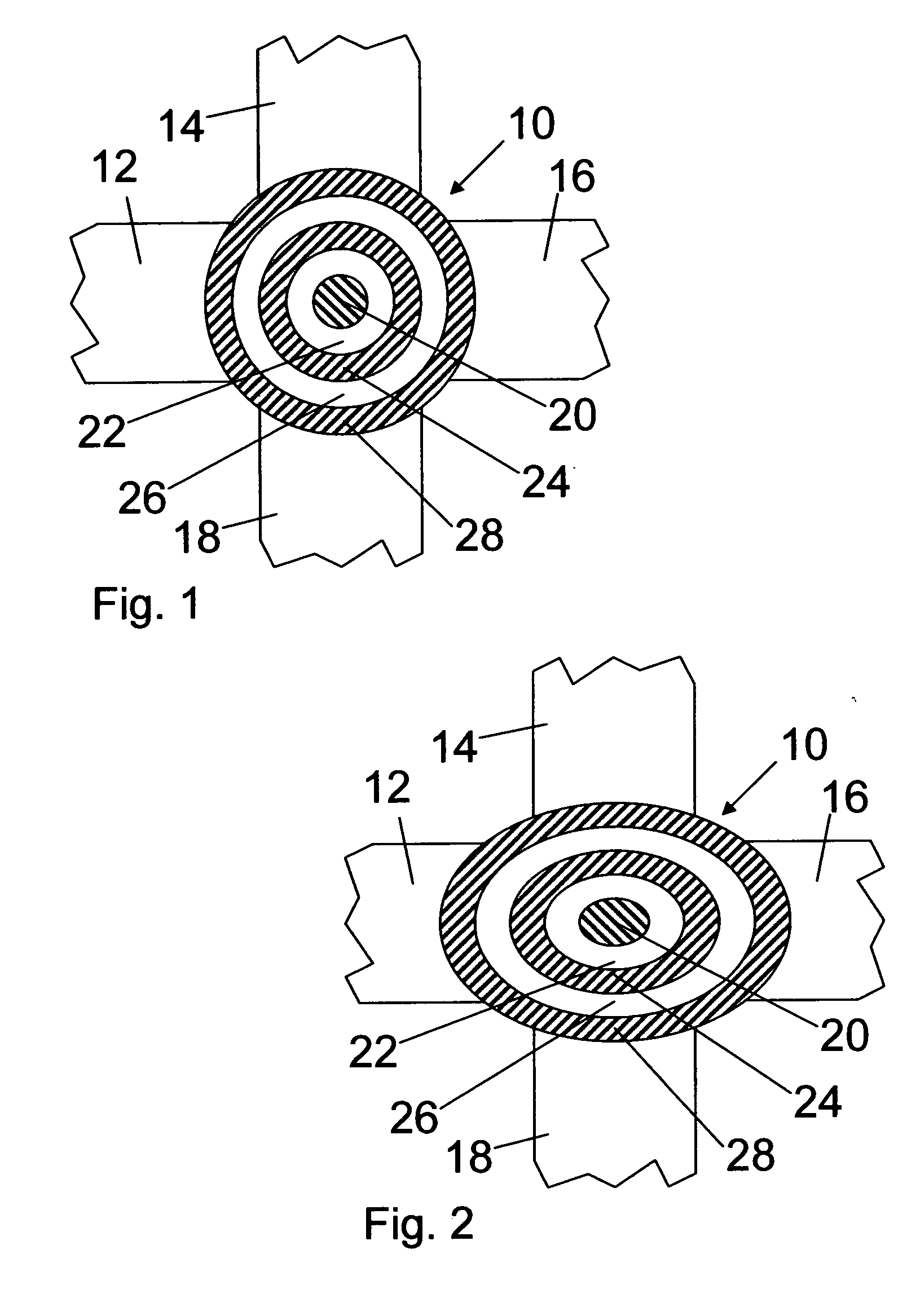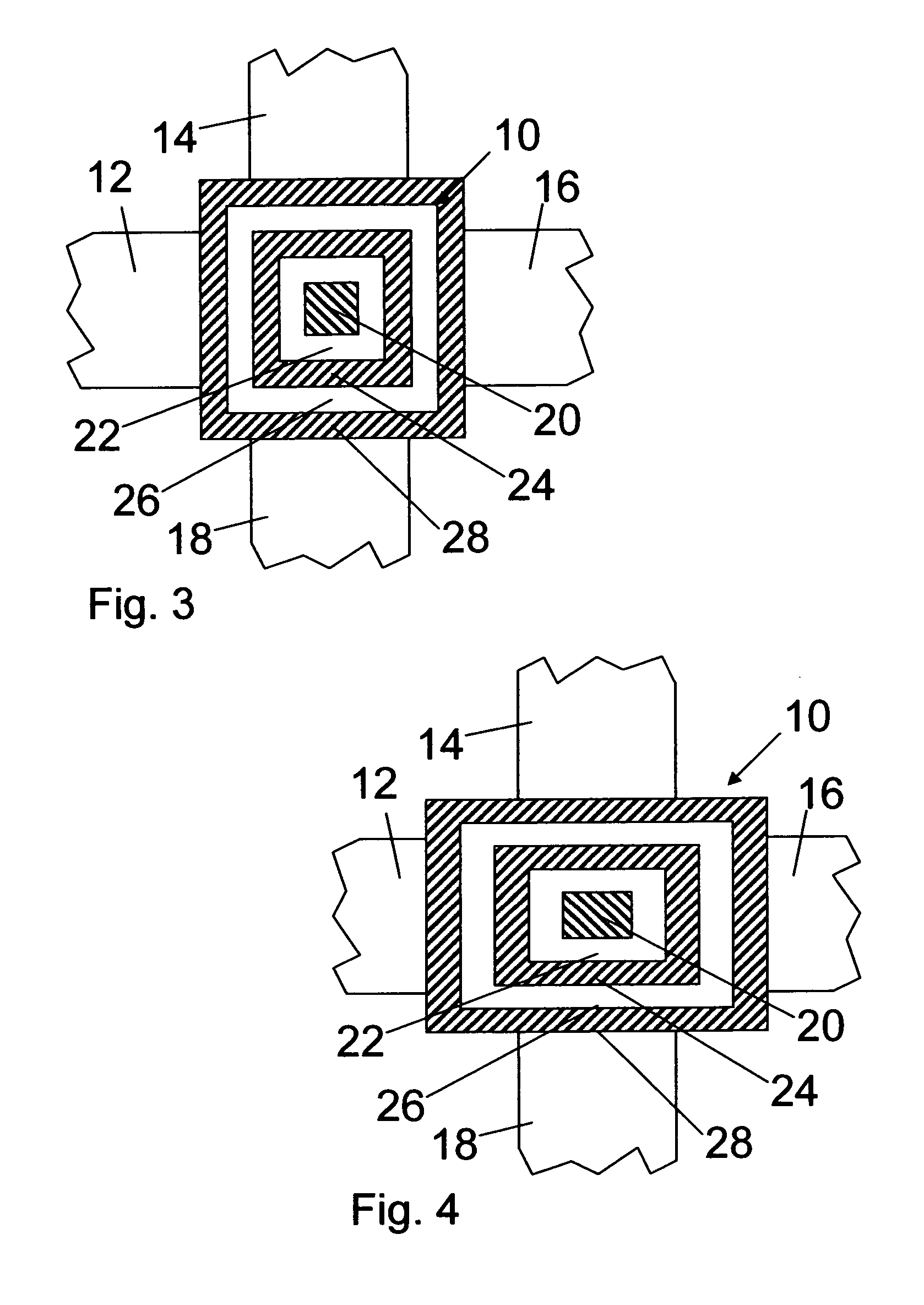Optical switch
a technology of optical switch and optical resonator, which is applied in the field of optical switch, can solve the problems of insufficient switching behavior of the conventional switch of the above-cited us patent publication, and achieve the effects of reducing the number of optical resonators, and improving the quality factor q of the optical resonator
- Summary
- Abstract
- Description
- Claims
- Application Information
AI Technical Summary
Benefits of technology
Problems solved by technology
Method used
Image
Examples
first embodiment
[0020]FIG. 1 is a schematic top view of an optical switch according to the present invention. The optical switch comprises an optical resonator 10 and optical waveguides 12, 14, 16, 18, optically coupled to the optical resonator 10. In the present embodiment, the four optical waveguides 12, 14, 16, 18 coupled to the optical resonator 10 are equivalent. In particular, the whole switch comprises a fourfold symmetry axis perpendicular to the drawing plane and the width of all waveguides 12, 14, 16, 18 are equal.
[0021] Also, without loss of generality, the waveguides will subsequently be referred to as a first input optical waveguide 12 for guiding a first optical signal to the optical resonator 10, a second input optical waveguide 14 for guiding a second optical signal to the optical resonator 10, a first output optical waveguide 16 for guiding a third optical signal from the optical resonator 10 and a second output optical waveguide 18 for guiding a fourth optical signal from the opti...
third embodiment
[0044]FIG. 6 is a schematic top view of an optical switch with a square-like resonator structure. This embodiment differs from the third embodiment described above with reference to FIG. 3 in that the second and fourth quadratic frames 24, 28 of the optical resonator 10 are subdivided into segments 241, 242, 243, 244, or 281, 282, 283, 284, respectively, by smaller gaps 30.
[0045] The gaps 30 are positioned at the corners of the quadratic frames 24, 28 and, hence, between the optical waveguide 12, 14, 16, 18. Thereby, the segments 241, 242, 243, 244, 281, 282, 283, 284 are straight strips. The segments may be rectangular as displayed in FIG. 6 or shaped like trapezoids.
[0046] The gaps 30 only slightly reduce the quality factor Q of the optical resonators 10 displayed in FIGS. 5 and 6. Furthermore, the resonator modes or eigenmodes of the optical resonator 10 are only slightly influenced by the smaller gaps 30. The gaps 30 may, for example, be used for stabilizing the orthogonality o...
PUM
 Login to View More
Login to View More Abstract
Description
Claims
Application Information
 Login to View More
Login to View More - R&D
- Intellectual Property
- Life Sciences
- Materials
- Tech Scout
- Unparalleled Data Quality
- Higher Quality Content
- 60% Fewer Hallucinations
Browse by: Latest US Patents, China's latest patents, Technical Efficacy Thesaurus, Application Domain, Technology Topic, Popular Technical Reports.
© 2025 PatSnap. All rights reserved.Legal|Privacy policy|Modern Slavery Act Transparency Statement|Sitemap|About US| Contact US: help@patsnap.com



